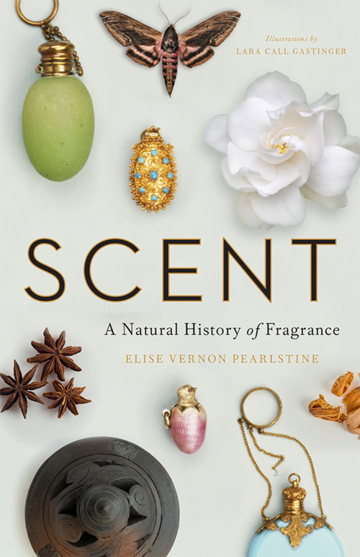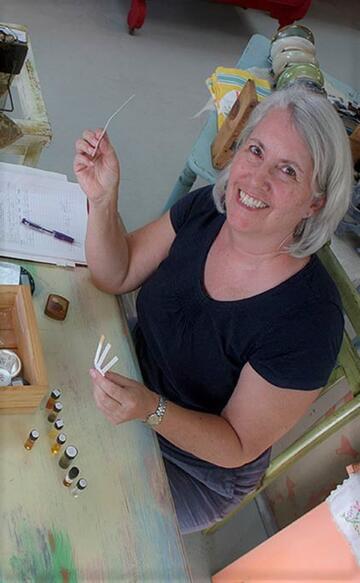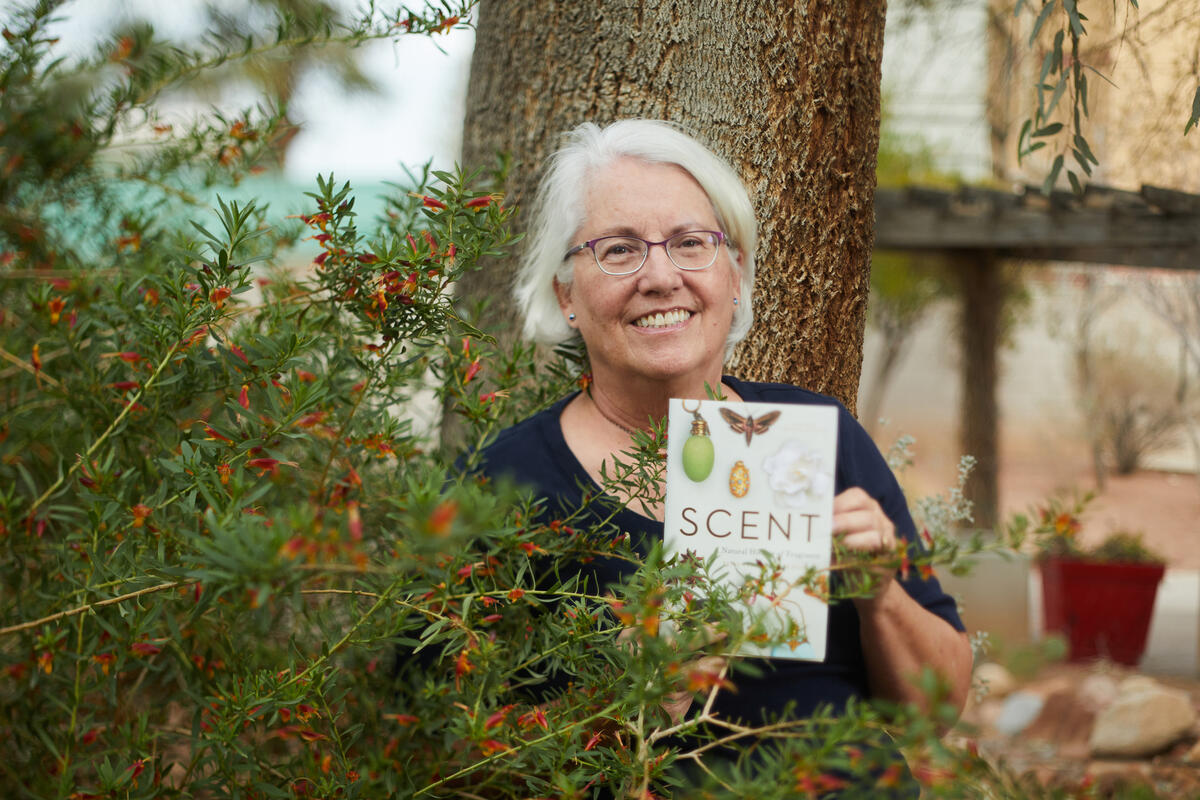For thousands of years, civilizations have been fascinated by the allure of natural scents. Ancient India, Persia, Egypt, the Roman Empire. Whether as part of a beauty regime or a religious ritual. The recipe for Cleopatra’s perfume called for pine resin. The Catholic Church, for hundreds of years, has been using myrrh and frankincense during sacred ceremonies. To this day, perfumery and essential oils remain booming industries.
The natural oils present in resinous or incense plants are harvested, typically, by processes like “tapping,” which inflict a small wound in order to collect resin. The resin oozes out, and a process begins to extract those natural oils. For some aromatics, it takes several pounds of the plant or flower to collect enough natural oils for a single vial of a favorite essential oil.

And while humans, egocentric by nature, may think these fragrances are meant for them — those scents are actually the language of flowers, trees, and other plants.
In her new book, UNLV alumna and wildlife biologist Elise Vernon Pearlstine translates that language for us. Scent: A Natural History of Fragrance, published by Yale University Press, “investigates plants' evolutionary reasons for creating aromatic molecules,” as well as “the natural history of aromatic substances and their intersection with human culture and civilization.”
Flora, she reminds us, use scents to attract pollinators, send warnings, provide defense, or even call in the reserves when under attack by hungry insects.

“The plant can sense the chewing, so it releases these complex compounds to communicate with predators. It draws in protection to eat the caterpillar,” says Pearlstine, ’96 Ph.D. Biological Sciences.
“The other story I like to talk about is the smell of mowing your lawn. That green smell is green leaf volatiles. What the grass is doing is sending out a message that it’s being attacked.”
A Career in Nature Sprouts from UNLV
As a doctoral student at UNLV, Pearlstine was more concerned about those predators than those plants they attracted. The Utah native studied continental patterns in raptor morphology and genetics. “I compared Eastern vs. Western populations of four species of raptor for body size and wing length to see how that compared with genetic variation,” she says.
That sparked her interest in large-scale patterns and, as she writes in her website blog, she also breathed in Nevada's aromas: "My fieldwork extended through the Great Basin Desert and one of my treasured experiences has always been sitting on top of a mountain or a slickrock outcrop and watching the rain move across the dry soil and aromatic plants of these deserts. As the rain moved in, it brought with it the smell of the desert, creosote, sage, dirt, and the microorganisms that stabilize and nourish the soil."
After UNLV, she carried out post-doc work at Brigham Young University related to geographic distribution of birds, and, from there, on to South Carolina, where she worked closely with a botanist and began learning a lot about plants and how they respond to their environment.
Relocating again, she worked for the University of Florida, where she conducted grant-funded wildlife studies in agricultural fields near Lake Okeechobee — "about 350,000 acres of sugarcane.”

As that grant concluded, she and her husband started their own soap business. “This was kind of a big side-step, but very soon I became interested in the geography and large-scale patterns of aromatic plants as part of my study as a perfumer,” she says. “My learned habits of taking notes and describing biological patterns helped me to create perfumes, but also became invaluable as I decided to write the in-depth exploration of fragrance that became my book Scent.”
On March 9, she’ll be returning to campus as part of UNLV’s long-running University Forum lecture series to talk about her book. The lecture will also discuss the story of floras — from the plants’ perspective, of course — and their historical relationship with the non-human world around them.
"As far back as I can remember," says Pearlstine, "I was the slow one on hikes with family and friends, and it was because I was always smelling this or touching that, finding the texture of the bark on a tree or following my nose to sniff a flower. Although my career as a wildlife biologist relied primarily on my visual sense, the natural world around me was also full of smells and texture. One of the goals I kept in mind while writing the book was to inspire people to notice the fragrances around them and experience their world more fully with all their senses."
A Biologist's Favorite Fragrances
Elise Vernon Pearlstine transitioned from wildlife biologist to natural perfumer. In her book Scent: A Natural History of Fragrance, she goes to great effort to accurately describe scents.All-Time Favorites Scents
- Vetiver. The essential oil of vetiver is in the root. I like the complexity. To me it’s green, smoky, and woodsy.
- Jasmine. Every perfumer loves jasmine grandiflorum, but for me it’s jasmine sambac that is my favorite. It’s sweet and fruity, a little more fun.
- Patchouli. I love patchouli. It’s a love or hate fragrance, but a nice patchouli is gorgeous. It’s got all these different tea and wine notes. It’s earthy more than dirty/muddy as some perceive it.
- Basically all the conifers like pines and balsams. They're very fresh, and they're really good for you if you’ve got a cold. Good for the respiratory system!
- For one more, I’ll say grapefruit, which is really pretty. A nice grapefruit essential oil is uplifting and cheerful!
The Scents of Nevada
- Creosote reminds me of the desert where I spent so much time with its sharp, resinous, musky smell.
- Rain in the desert, largely due to aromatics from creosote and other desert plants.
- Pinyon pine has a sweet-smelling resin that I love.
- Sagebrush, from my travels to northern Nevada to do fieldwork
- The floral scent of datura or jimsonweed flowers. It's elusive but really gorgeous early in the morning. Because they are pollinated by moths, the large trumpet-shaped blooms are white to be more visible at night; they have a perfume that guides the moth to the flower.



